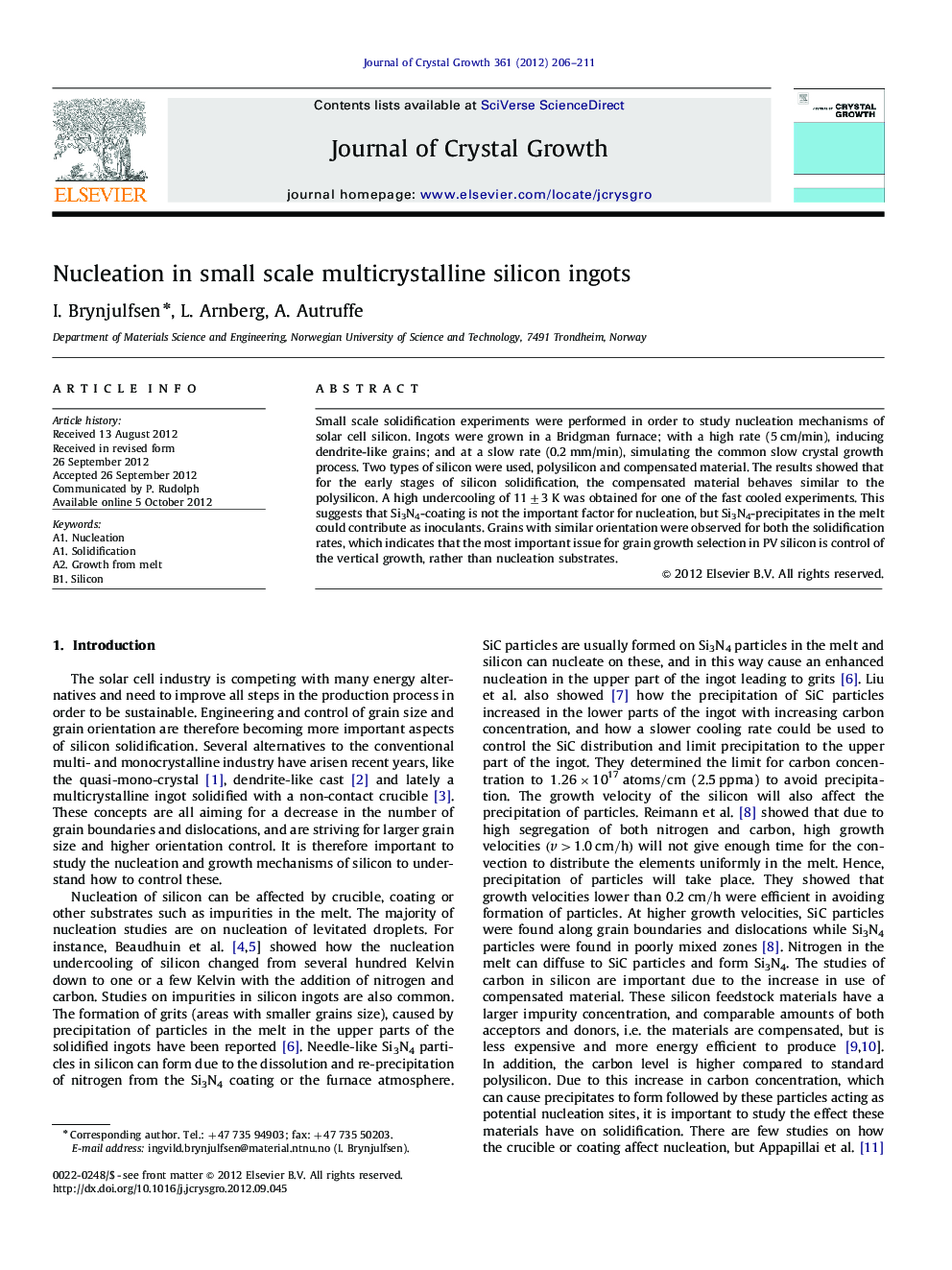| Article ID | Journal | Published Year | Pages | File Type |
|---|---|---|---|---|
| 1791428 | Journal of Crystal Growth | 2012 | 6 Pages |
Small scale solidification experiments were performed in order to study nucleation mechanisms of solar cell silicon. Ingots were grown in a Bridgman furnace; with a high rate (5 cm/min), inducing dendrite-like grains; and at a slow rate (0.2 mm/min), simulating the common slow crystal growth process. Two types of silicon were used, polysilicon and compensated material. The results showed that for the early stages of silicon solidification, the compensated material behaves similar to the polysilicon. A high undercooling of 11±3 K was obtained for one of the fast cooled experiments. This suggests that Si3N4-coating is not the important factor for nucleation, but Si3N4-precipitates in the melt could contribute as inoculants. Grains with similar orientation were observed for both the solidification rates, which indicates that the most important issue for grain growth selection in PV silicon is control of the vertical growth, rather than nucleation substrates.
► The nucleation undercooling and grain size of Si on Si3N4 coated SiO2 have been investigated. ► Two silicon feedstock materials were used and cooling rate has been altered. ► There were not found to be any difference in grain size or undercooling for the two feedstocks. ► Si3N4-precipitates in the melt seem to influence nucleation conditions.
